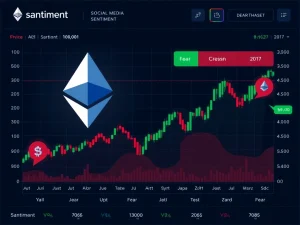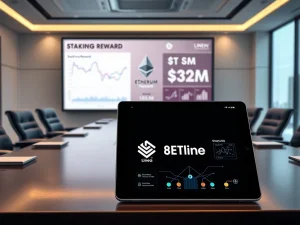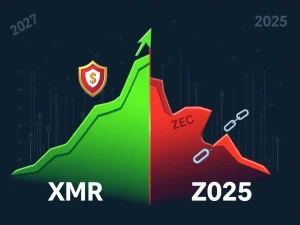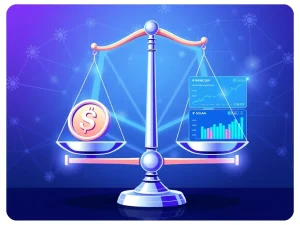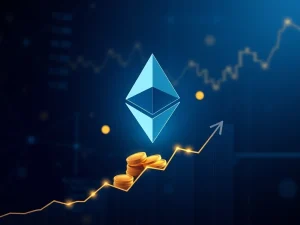TRON Network’s Phenomenal Rise: 273M Transactions & Stablecoin Growth Propelled by Kant Upgrade

In a cryptocurrency landscape constantly shifting, the TRON Network has truly distinguished itself, demonstrating an extraordinary surge in activity and market dominance in the first half of 2025. While headlines often focus on major players, TRON has quietly, yet powerfully, established itself as a formidable force, especially within the stablecoin ecosystem. If you’ve been following the market, you might have noticed its consistent presence, but the latest reports from Crypto News Insights and CryptoQuant paint a picture of unparalleled success. This isn’t just about numbers; it’s about a robust, scalable infrastructure proving its mettle in a high-demand environment.
The TRON Network’s Explosive Performance: What’s Driving the Surge?
The first half of 2025 has been nothing short of remarkable for the TRON Network. In May alone, the network processed a staggering 273 million transactions, marking its second-highest monthly total ever. This surge wasn’t a fluke; it was accompanied by an equally impressive rise in active addresses, which hit 28.7 million in June – the highest since mid-2023. These figures are not just statistics; they represent a vibrant, engaged user base increasingly relying on TRON for their daily crypto activities.
So, what’s fueling this phenomenal growth? It boils down to a combination of strategic focus, technological advancements, and operational efficiency. TRON has carved out a significant niche, particularly in stablecoin transactions, a sector where speed and low cost are paramount. Its architecture is designed for high throughput, allowing it to handle volumes that often dwarf those of its competitors.
Unpacking TRON’s Dominance in Stablecoin Growth
One of the most compelling narratives emerging from TRON’s H1 2025 performance is its undeniable leadership in stablecoin growth. The network saw a remarkable 40% year-to-date increase in its stablecoin supply, a testament to its growing adoption as a preferred platform for stablecoin transfers. Even more striking, over 51% of the total circulating USDT (Tether) now resides on the TRON network. This isn’t just a win for TRON; it’s a significant shift in the broader stablecoin landscape, underscoring the network’s pivotal role in global crypto liquidity.
This strategic expansion in the stablecoin ecosystem is no accident. It’s the result of targeted development and a clear understanding of market needs. TRON offers a compelling alternative to other blockchains for stablecoin transactions, primarily due to its efficiency and cost-effectiveness. As businesses and individuals increasingly rely on stablecoins for payments, remittances, and trading, TRON has positioned itself as the go-to infrastructure.
How the Kant Upgrade is Supercharging TRON’s Capabilities
At the heart of TRON’s recent success lies its commitment to continuous innovation. A pivotal development contributing to its enhanced performance is the GreatVoyage-v4.8.0, affectionately known as the Kant Upgrade. This significant protocol update wasn’t just a minor tweak; it brought substantial improvements to the network’s core functionality, directly impacting its speed, scalability, and overall user experience.
Key enhancements introduced by the Kant Upgrade include:
- Enhanced Performance: Optimized code and consensus mechanisms mean faster transaction processing and greater network stability.
- Ethereum Compatibility: Improved interoperability with the Ethereum Virtual Machine (EVM), making it easier for developers and users to bridge assets and applications between the two ecosystems.
- Reduced Transaction Costs: The upgrade further refines TRON’s already low-fee structure, making micro-transactions and frequent transfers even more economically viable.
- Enhanced Usability: A more streamlined experience for users, reducing friction and making the network more accessible to a broader audience.
These technical advancements are crucial. They ensure that as demand for the TRON Network grows, its underlying infrastructure can handle the load efficiently and affordably, solidifying its reputation as a reliable blockchain platform.
USDD 2.0 and Gas-Free USDT Transfers: A Game Changer?
Beyond the core network upgrades, TRON’s innovation extends to its stablecoin offerings, particularly with the introduction of USDD 2.0. This evolution of TRON’s decentralized stablecoin is designed to offer greater flexibility and stability within the ecosystem. USDD 2.0 introduces a fully decentralized minting mechanism, allowing users to mint USDD by collateralizing TRX or USDT, thereby enhancing its stability and transparency.
Perhaps one of the most user-friendly innovations is the introduction of gas-free USDT transfers. This feature allows users to pay transaction fees in USDT directly, eliminating the need to hold TRX specifically for gas. This significantly lowers the barrier to entry for new users and streamlines the experience for existing ones, making USDT transactions on TRON incredibly convenient and cost-effective. This move directly addresses a common pain point in blockchain transactions and further cements TRON’s appeal for stablecoin users.
TRON’s Unrivaled Edge in USDT Transactions
When it comes to sheer volume and value of USDT transactions, TRON stands in a league of its own. CryptoQuant’s analysis highlights TRON’s remarkable operational efficiency and market leadership. The network consistently processes approximately 2.3–2.4 million daily USDT transactions. To put this into perspective, that’s roughly 6.8 times the volume seen on Ethereum.
Furthermore, the daily transfer value on TRON for USDT reaches an astounding $24.6 billion, which is 2.7 times the value transferred on Ethereum. These figures are not just numbers; they illustrate TRON’s unparalleled efficiency and its critical role as the primary conduit for a vast majority of global USDT transfers. This efficiency translates directly into lower costs and faster settlements for users, making TRON the preferred choice for high-volume stablecoin operations.
This robust activity also extends to TRON’s decentralized finance (DeFi) ecosystem. Platforms like SunSwap, TRON’s leading decentralized exchange (DEX), recorded impressive monthly wTRX swap volumes ranging from $3–3.8 billion. Similarly, JustLend, a major lending protocol on TRON, experienced a consistent rise in deposits and borrowing activity, especially for USDT and USDD. These metrics collectively reflect strong user engagement and unwavering confidence in TRON’s reliable and high-performance infrastructure.
Strategic Partnerships and a Vision for Global Adoption
TRON’s success isn’t solely about its internal technological prowess; it’s also a story of strategic foresight and robust ecosystem integrations. The network has actively forged partnerships across various domains, expanding its reach and utility. Collaborations with infrastructure providers like Chainstack, cross-chain solutions such as Router Protocol, and oracle services like Chainlink have strengthened TRON’s foundational capabilities.
Moreover, the addition of new Super Representatives like Nansen and P2P.org further decentralizes and secures the network. Payment integrations with global services like MoonPay and Revolut Pay have made it easier for users to onboard and offboard funds, bridging the gap between traditional finance and the crypto world. These partnerships are crucial in expanding TRON’s global footprint and making its services accessible to a wider audience, driving mass blockchain adoption.
A Leading Infrastructure Provider for the Future
The achievements of the TRON Network in the first half of 2025 unequivocally reaffirm its position as a leading infrastructure provider for stablecoin transactions and decentralized finance applications. With over 321 million user accounts, 10.9 billion total transactions processed, and a Total Value Locked (TVL) of $25.8 billion as of July 2025, TRON is not just growing; it’s thriving. Its scalable architecture, combined with a strategic focus on stablecoins and DeFi, has created a powerful ecosystem that continues to attract users and developers alike. As the blockchain industry matures, TRON’s commitment to efficiency, innovation, and user-centric development ensures its pivotal role in shaping the future of decentralized finance and global blockchain adoption.
Frequently Asked Questions (FAQs)
1. What is the significance of TRON’s 273 million transactions in May 2025?
The 273 million transactions in May 2025 represent TRON’s second-highest monthly total ever, showcasing the network’s immense processing capacity and growing user adoption. This high volume underscores its efficiency and reliability as a blockchain for frequent, high-throughput transactions, particularly stablecoins.
2. How has TRON’s stablecoin supply grown in the first half of 2025?
TRON’s stablecoin supply grew by an impressive 40% year-to-date in H1 2025. This growth highlights its increasing dominance in the stablecoin market, with over 51% of all circulating USDT now residing on the TRON Network, making it a preferred platform for stablecoin transfers.
3. What is the Kant Upgrade and how does it benefit the TRON Network?
The Kant Upgrade (GreatVoyage-v4.8.0) is a significant protocol update that enhanced the TRON Network’s performance, improved Ethereum compatibility, reduced transaction costs, and generally boosted usability. It makes the network faster, more efficient, and more accessible for both users and developers.
4. What are the key features of USDD 2.0?
USDD 2.0 is TRON’s enhanced decentralized stablecoin. Its key features include a fully decentralized minting mechanism, allowing users to mint USDD by collateralizing TRX or USDT. Crucially, it also enables gas-free USDT transfers, meaning users can pay transaction fees directly in USDT without needing separate TRX tokens.
5. How does TRON’s USDT transaction volume compare to Ethereum’s?
TRON significantly outperforms Ethereum in USDT transaction volume and value. TRON processes approximately 2.3–2.4 million daily USDT transactions, which is about 6.8 times Ethereum’s volume. Its daily transfer value for USDT reaches $24.6 billion, roughly 2.7 times that of Ethereum, demonstrating its superior efficiency for stablecoin transfers.



